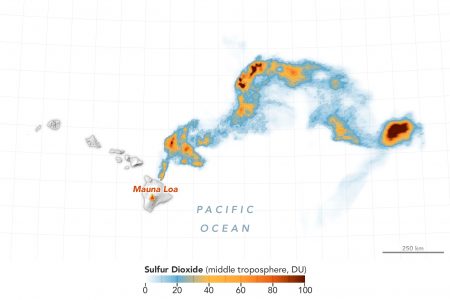
The world’s largest active volcano—Hawaii’s Mauna Loa—has been quiet for the past four decades. But in November 2022, the volcano began to stir.
Some cloud cover on November 28 scattered light from the eruption and urban areas and made it more diffuse. “It also looks like the lava emitted by the eruption was so bright that the sensor was saturated, producing a ‘post-saturation recovery streak’ along the VIIRS scan to the southeast,” noted Simon Carn, a volcanologist at Michigan Tech. “These streaks are only seen over very intense sources of visible radiation.”
“The eruption is effusive rather than explosive, although its initial phase overnight on November 28 was quite energetic and injected some sulfur dioxide to high altitudes, possibly all the way to the tropopause,” said Carn. “That is unusual for this type of eruption.”
Read more at NASA Earth Observatory, or follow Simon Carn on Twitter, @simoncarn.
